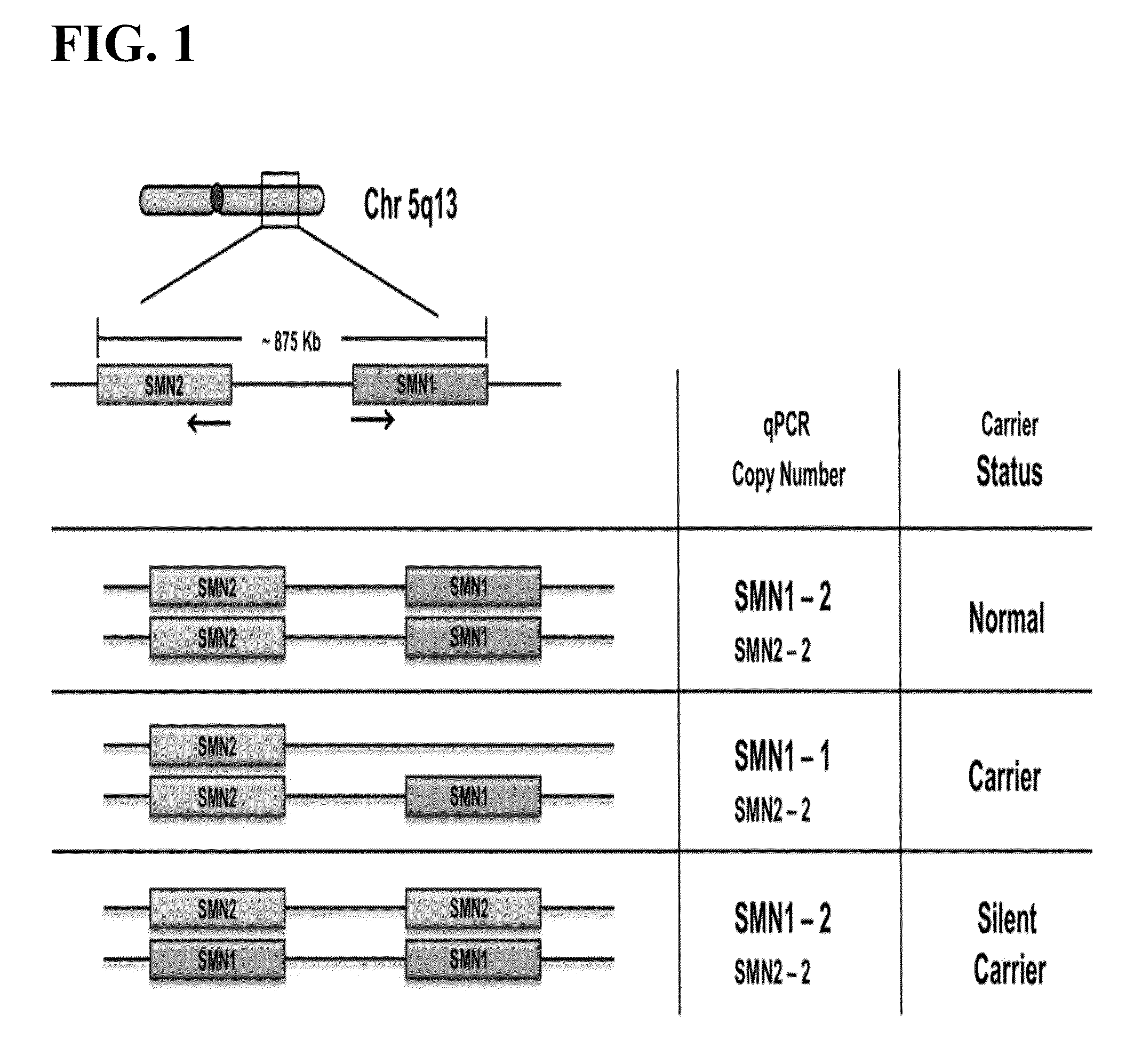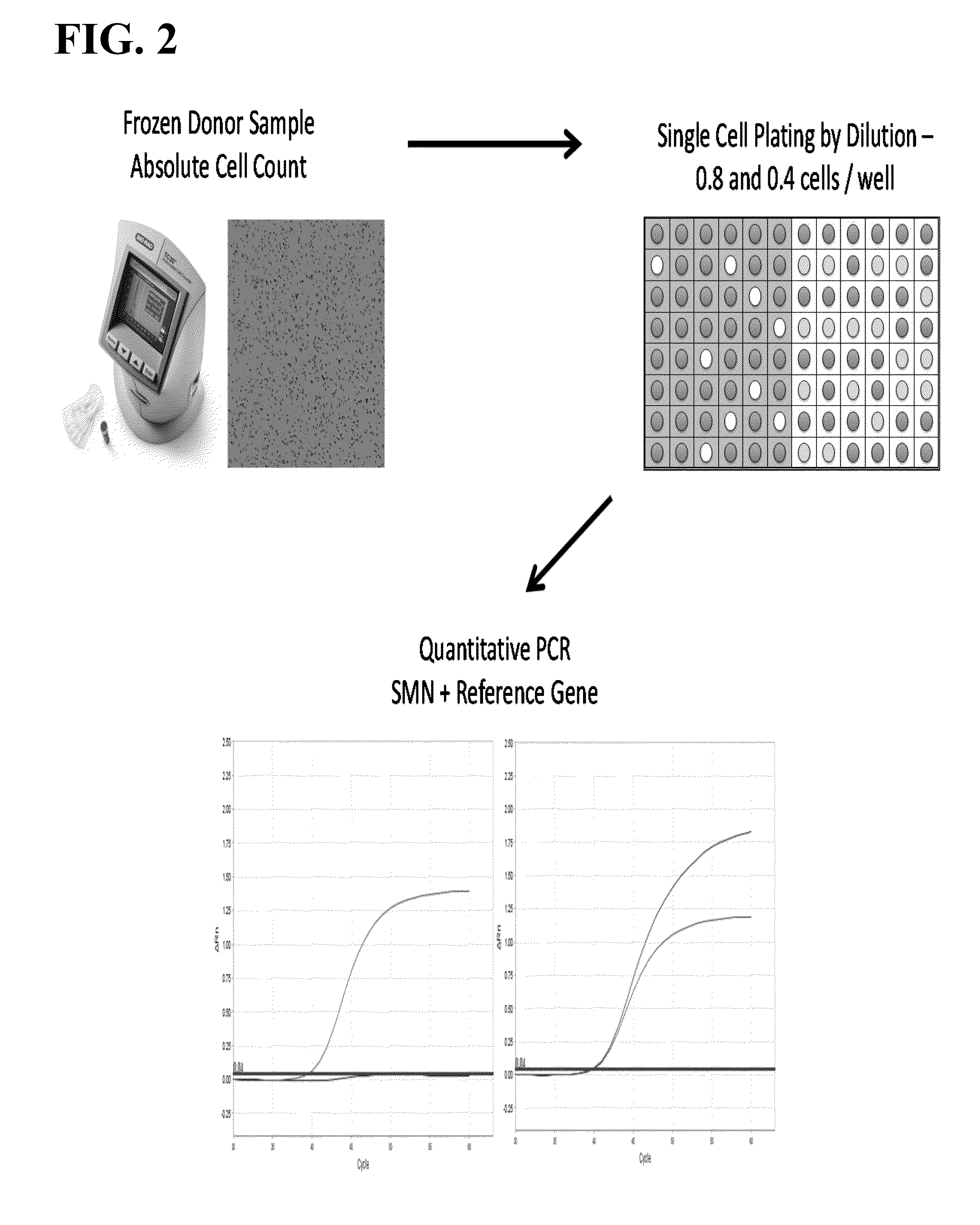Methods to detect a silent carrier genotype
a carrier genotype and genotype technology, applied in the field of methods to detect silent carriers, can solve the problems of difficult linkage analysis of chromosomal defects, ineffective carrier genotype detection, and difficult sma carrier testing, so as to minimize the loss of genomic dna and facilitate the lysis of haploid cells
- Summary
- Abstract
- Description
- Claims
- Application Information
AI Technical Summary
Benefits of technology
Problems solved by technology
Method used
Image
Examples
example 1
Method
[0108]Frozen human semen specimens (Bioreclamation IVT) were thawed and counted on a TC20 Automated Cell Counter (BioRad). Prior to counting, specimens were incubated for 30 minutes at 37° C., vortexed for a minimum of 30 seconds and diluted 1:1 with TE to ensure a single cell suspension. The resulting counts were then used for the genotyping and single sperm assays. For the SMN1 and SMN2 genotyping assay, DNA from the sperm specimens was extracted using a modified Puregene manual extraction protocol (Qiagen). For the single cell sperm assay, each specimen was individually counted on the TC20 cell counter and diluted to a final concentration of 0.8 cells / μl and 0.4 cells / W.
[0109]Sperm lysis was performed in a 96 well PCR plate, to which 1W of the diluted donor sperm specimens was added to 5 W of lysis buffer (0.1 M DDT, 10 mM EDTA, 0.4 M KOH, and 10% Roche recombinant PCR grade proteinase K) for a total volume of 6W / well. Each specimen had 48 replicate wells for the 0.8 cells / ...
PUM
| Property | Measurement | Unit |
|---|---|---|
| temperature | aaaaa | aaaaa |
| temperatures | aaaaa | aaaaa |
| average volume | aaaaa | aaaaa |
Abstract
Description
Claims
Application Information
 Login to View More
Login to View More - R&D
- Intellectual Property
- Life Sciences
- Materials
- Tech Scout
- Unparalleled Data Quality
- Higher Quality Content
- 60% Fewer Hallucinations
Browse by: Latest US Patents, China's latest patents, Technical Efficacy Thesaurus, Application Domain, Technology Topic, Popular Technical Reports.
© 2025 PatSnap. All rights reserved.Legal|Privacy policy|Modern Slavery Act Transparency Statement|Sitemap|About US| Contact US: help@patsnap.com



